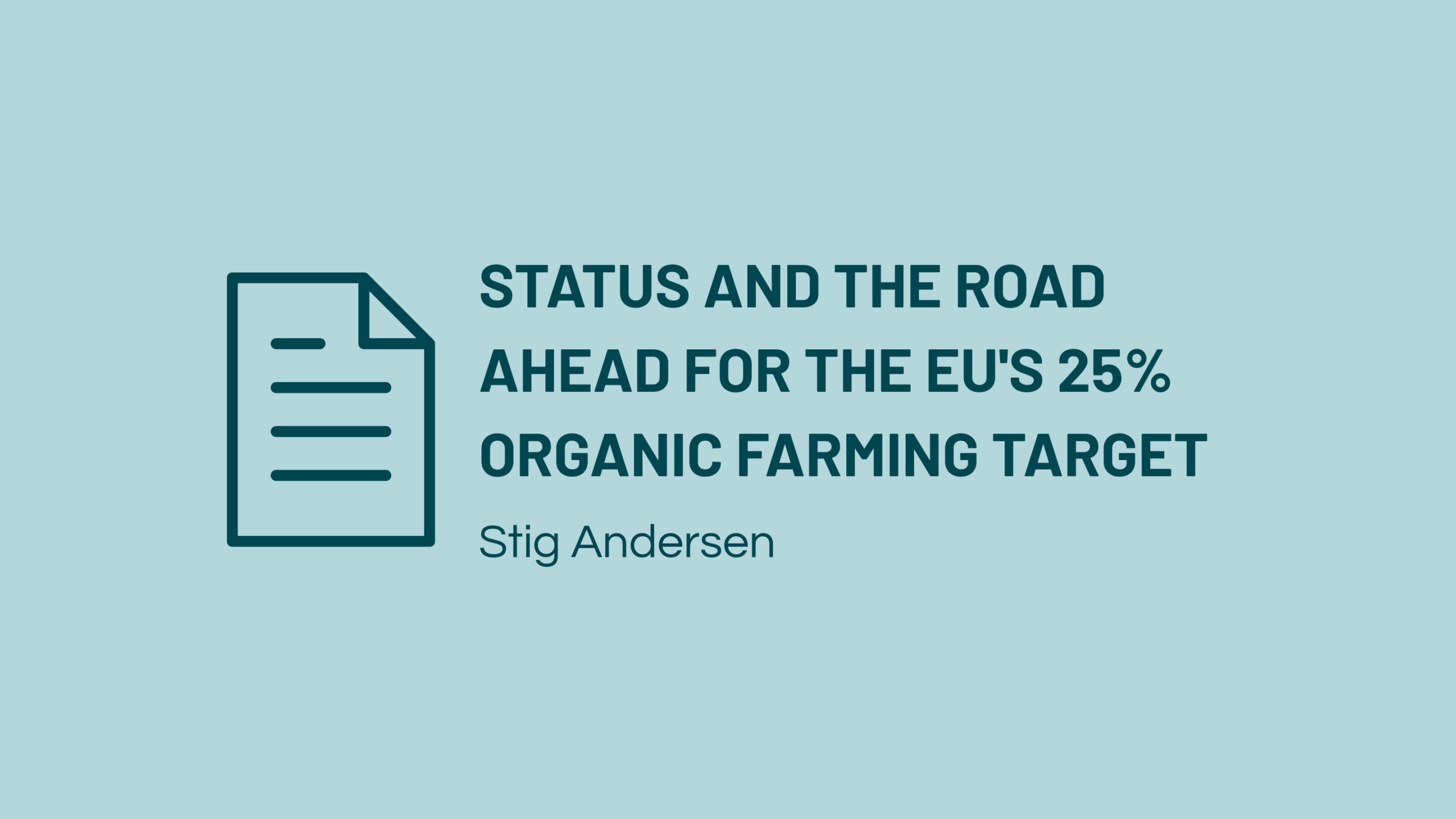
The European Commission has set an ambitious goal: by 2030, 25% of agricultural land in the EU should be under organic management. But how close are we to achieving this target, and what factors will influence further progress?
The recently published 29 country factsheets by OrganicTargets4EU provide a comprehensive overview of the current status, progress, and challenges faced by EU member states. In this article, Nic Lampkin, an agricultural economist at the Thünen Institute of Farm Economics and co-author of the OrganicTargets4EU factsheets, particularly focusing on policy support, shares his perspectives on the findings and the opportunities and challenges ahead.
Key Factors Influencing Organic Farming Growth
According to Nic Lampkin, three primary factors drive the expansion of organic farming:
- Policy support: government initiatives such as financial incentives, research funding, and knowledge-sharing programmes, play a crucial role.
- Market opportunities: strong domestic demand or a viable export market can encourage farmers to convert to organic production.
- Information: access to advice, training, education, research and innovation programmes
Lampkin highlights Germany as a prime example where policy support, market, and information development have gone hand in hand:
“Germany has the largest total market for organic products in the EU. In 2001, the country made a strong commitment, not just by supporting farmers in converting to organic farming but also by investing in information, research, and infrastructure. As a result, Germany now has one of the largest annual budgets for organic farming research.”
In 2023, 1.9 million hectares (11.4% of German farmland) were managed organically and retail sales of organic reached 16 billion euros, the largest national market for organic products in Europe.
From 2023, Germany has increased organic support payments compared to the last CAP period and plans to spend nearly 24% of agri-environmental support on organic conversion and maintenance in the period 2023-2027. A new action plan for 2030 was also initiated.
The Impact of Policy Support: Insights from Greece and Denmark
Lampkin points to Greece and Denmark as other examples of countries with strong policy support for the development of the organic sector. Greece has the highest share of total CAP payments (11%) and agri-environmental payments (50%) dedicated to organic conversion and maintenance support in the period 2023-2027 and has seen organic farming grow rapidly to 18% of farmland in 2022 and 22% in 2023.
Denmark, with more of an organic market focus, has implemented multiple action plans since 1995, with a strong focus on organic food in public procurement. With 11.5% of its farmland managed organically, and 12% of retail food and drink sales organic, Denmark also had the highest per capita organic consumption at 365 euros per person per year in 2022.
However, strong policy support is not enough. Lampkin stresses that market health is crucial:
“High level of policy support does not make any difference if markets are insecure. Farmers need to have a basis to proceed with confidence, and that basis usually consists of a combination of policy support and market health.”
The Importance of Information
Access to reliable information is essential for farmers considering the transition to organic farming. Lampkin highlights the OrganicTargets4EU practice abstracts, the AKIS factsheets, and the Organic Farm Knowledge platform as useful resources. They help farmers find advisory services and competence centres such as the Innovation Centre for Organic Farming in Denmark, KÖN in Germany, and Interbio in France as providers of valuable information for the individual farmer when converting to organic farming.
External Disruptions
According to Lampkin, an often-overlooked factor influencing conversion to organic farming is disruption in conventional farming. Austria provides a compelling example:
“Austria had three consecutive years of drought that seriously affected sugar beet production. Many conventional farmers saw their incomes decline and began exploring organic farming — not necessarily for higher profits, but as a survival strategy.”
This suggests that economic and environmental pressures can sometimes accelerate the transition to organic farming.
Can We Reach 25% by 2030?*
A look across the 29 EU Member States reveals significant differences in the share of agricultural land under organic management. However, Lampkin emphasises that the 25% target is an EU-wide average rather than a country-specific requirement:
“The target was never meant to apply to each individual country. It is an EU-wide average. We cannot expect countries currently at 2% to reach 25%, and there is no reason why Austria, for example, should halt organic sector growth just because it has already met the target.”
This means that while some countries are already well ahead, others still have considerable ground to cover.
The likelihood of reaching 25% organic farmland by 2030 depends on several different assumptions, says Lampkin:
“If we base projections on recent linear growth, we will not reach 25% by 2030. However, historical trends of exponential growth suggest a more optimistic scenario. If we assume a doubling every ten year, which we experienced since 2000, we could reach 19% by 2030 and 25% by 2035.”
While the goal may not be fully met by 2030, Lampkin argues that the target remains crucial:
“Even if we fall short, the 25% target is a vital statement of political ambition, and confidence is crucial to the organic sector to ensure continued policy support for its development.”
*The question is explored further in a recent article by Lampkin et al. Achieving the EU Farm-to-Fork 25% Organic Target: How Can Policy Support This Goal?.